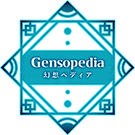Highland Kingdom: Difference between revisions
More actions
mNo edit summary |
mNo edit summary |
||
| Line 43: | Line 43: | ||
|Card Stories= yes | |Card Stories= yes | ||
}} | }} | ||
[[Category:Countries]] [[Category:Countries in Suikoden II]] [[Category:Countries in Genso Suikogaiden Volume 1]] | |||
Revision as of 15:54, 27 January 2014
Mauro Blight (237-?)
19 unknown Kings
Robert Blight (?-434)
Agares Blight (434-460)
Luca Blight (460)
Jowy Blight (460)
The Highland Kingdom (ハイランド王国, Hairando Oukoku) was a nation located on the Northern continent. It forms part of the setting for Suikoden II.
Information
In the past, the Highland region existed as part of the southern territories of the Holy Kingdom of Harmonia. The Highland Kingdom was founded in the year 237. In that year, Mauro Blight received the Beast Rune and the title of King from Harmonia for his work in quelling civil war in the nation. Although ostensibly a reward for faithful service, the lands were granted with an ulterior motive; to provide Harmonia with a buffer zone against rebellious states, such as the Scarlet Moon Empire.
Highland has always maintained an intimate relationship with Harmonia. Since the establishment of Highland, the two nations have always been in alliance. However, that does not mean that trust is very high between the two. Although Harmonia is willing to support Highland with reinforcements, they will also not hesitate to send spies to infiltrate the country.
Centred around its capital of L'Renouille and being a military-focused nation, Highland had been involved in repeated military conflicts, for many years, with the City-State of Jowston. The roots of this conflict extend back to the year 252 when Highland took advantage of civil war in the Dunan Monarchy, invading what was then eastern South Window (modern day Muse). As Highland had a smaller area and population compared to Jowston, the nation saw a necessity in keeping an advantage in terms of military power, leading to a strong military influence as well as a strong meritocracy.
428 saw the beginning of the Highland-Jowston War, with Highland under the reign of King Robert and the military leadership of Han Cunningham, invading Jowston and quickly annexing Muse. Greenhill and Matilda would soon follow. However, 432 saw the Jowston Army's Great Offensive push back the invading force, liberating Greenhill and Matilda. The moderate King Agares' ascension to the throne in 434 allowed for a cease-fire to be agreed on between the two nations, following the settlement of a border dispute centred on Kyaro Town and an uneasy peace settled in for a while although espionage and covert attacks, such as the one which struck the Blight royal caravan in 443, continued.
Highland's more peaceful direction would soon be challenged by the military, led by Prince Luca. In 460, an invasion of Jowston by Highland would be orchestrated by Luca. This war would eventually become the Dunan Unification War and would entail the assassination of not only Agares, but Luca as well, by Jowy Atreides as the war raged on. Although Highland held the initial advantage, scattering the City-State troops, a resistance organised at a base on the ruins of North Window would eventually form the New State Army. Eventually, the Highland forces would be defeated and with a final invasion of Highland itself, the Kingdom would be brought to its demise. It would be reorganised as Higheast, a province of the new Dunan Republic.
Flag
The flag of the Highland Kingdom is white, with blue tones. The Beast Rune, which was bestowed by Hikusaak along with the title of King, is a recurring motif as a symbol of masculinity and nobility.
References
- Genso Suikoden I & II Official World Guide Book (ISBN 4-471-36033-7), page 62
- Genso Suikoden Genso Shinsho Vol. 5 2001 Summer Issue (ISBN 4-88317-884-6), pages 16-17
- Genso Suikoden Encyclopaedia (ISBN 4-575-16297-3), page 210
- Genso Suikoden Kiwami Encyclopedia, pages 194, 262, 338
